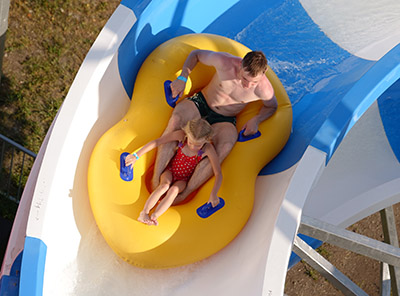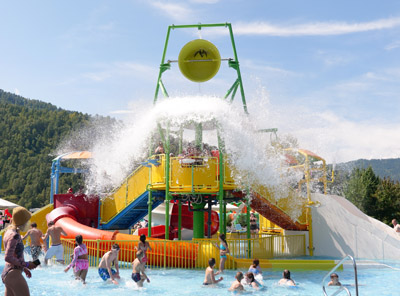The Thrill of Weightlessness: Exploring the Sensational Experience of Water Slide Free-Fall
Water slides are synonymous with adrenaline-pumping excitement, and one of the most exhilarating sensations they offer is the feeling of weightlessness. This momentary loss of gravity occurs during rapid descents, sharp turns, or sudden drops, creating an unforgettable rush for riders. Understanding the science and design behind these sensations can enhance appreciation for the engineering marvels that make water parks a top destination for thrill-seekers.
How Water Slides Create Weightlessness
The sensation of weightlessness on a water slide is rooted in physics. When riders accelerate downward due to gravity, their bodies experience a brief period where the normal force—the feeling of contact with the slide—diminishes. This happens most intensely during steep drops or loop-the-loop sections, where centrifugal force temporarily counteracts gravity. The result is a floating, disorienting, yet thrilling experience that lasts just a few seconds but leaves a lasting impression.
Designers optimize slides for this effect by incorporating steep inclines, sudden vertical drops, and smooth transitions between sections. For example, a slide with a near-vertical launch followed by a sharp curve can amplify the feeling of free-fall, as riders’ bodies struggle to adjust to the rapid change in direction. The absence of friction, thanks to water lubrication, further enhances the sensation, allowing riders to glide effortlessly through the twists and turns.
Popular Slide Features That Enhance Weightlessness
Certain design elements are particularly effective at triggering the weightless sensation. One such feature is the “plunge drop,” where riders descend almost straight down before leveling out. This sudden change in elevation creates a powerful surge of adrenaline as the body reacts to the abrupt loss of support. Another example is the “half-pipe” slide, which uses centrifugal force to lift riders off the surface briefly, mimicking the feeling of soaring through the air.
Enclosed tunnels with dark lighting or LED effects can also intensify the experience. When riders cannot see the upcoming drops or turns, their brains rely solely on physical cues, heightening the surprise and disorientation of weightlessness. Additionally, slides with multiple small drops in succession—known as “camelbacks”—prolong the sensation by repeatedly lifting and dropping riders, creating a rhythmic pattern of free-fall moments.
The Psychological Impact of Weightless Thrills
Beyond the physical sensations, the weightless experience on water slides has a profound psychological effect. For many, it represents a temporary escape from the constraints of everyday life, offering a chance to embrace chaos and unpredictability in a controlled environment. The rush of endorphins released during these moments can improve mood and reduce stress, making water slides a popular choice for group outings or solo adventures.
Studies suggest that the fear-excitement paradox plays a role in the appeal of weightless rides. While the initial drop may trigger anxiety, the brain quickly reframes it as excitement once it realizes the situation is safe. This cognitive shift explains why riders often seek out taller, faster slides despite initial hesitation. The anticipation of weightlessness becomes part of the thrill, driving repeat visits and fostering a sense of accomplishment after conquering a challenging slide.
Safety Considerations for Maximizing Enjoyment
While weightlessness is a key attraction, safety remains paramount. Modern water slides undergo rigorous testing to ensure that the forces exerted on riders stay within safe limits. Materials like fiberglass and high-density polyethylene are used to create smooth surfaces that minimize friction and reduce the risk of injury during high-speed maneuvers.
Operators also enforce height, weight, and health restrictions to prevent accidents. For instance, individuals with neck or back injuries may be advised against riding slides with abrupt stops or loops. Proper riding posture—lying flat or sitting upright, depending on the slide design—helps distribute forces evenly across the body, enhancing both safety and comfort.
By balancing innovation with caution, water parks can continue offering heart-pounding weightless experiences while prioritizing rider well-being. Whether it’s a first-time rider or a seasoned enthusiast, the allure of defying gravity remains a timeless draw for audiences of all ages.






